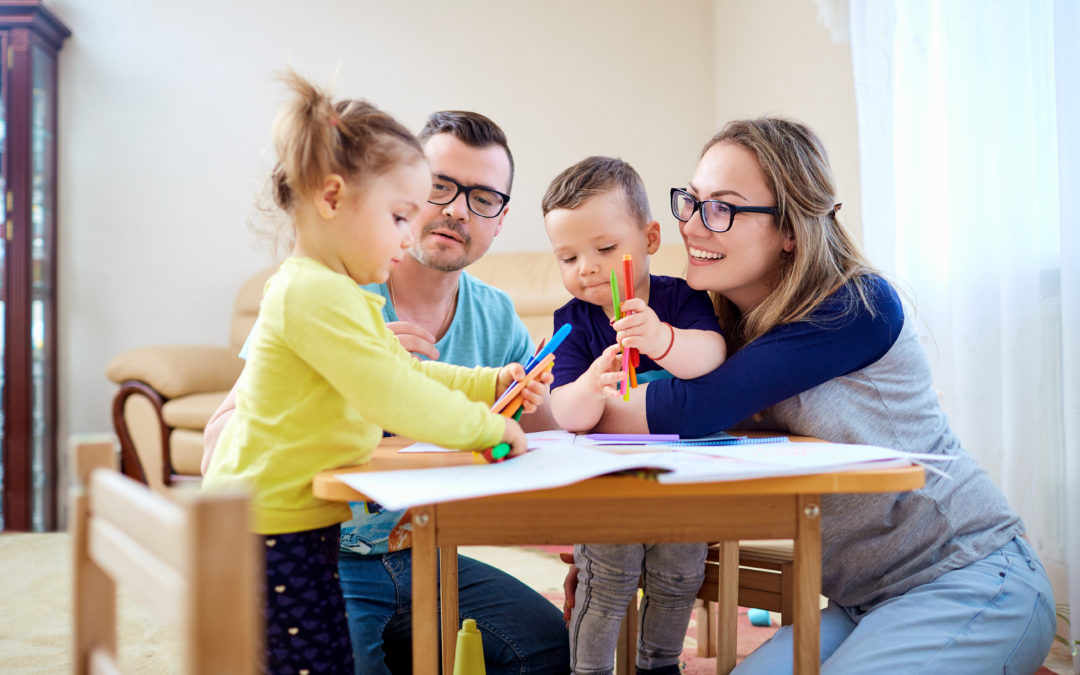As we follow numerous news reports on COVID-19 coronavirus outbreak, we, as parents, are tasked with managing our own anxiety. It becomes particularly important as we try to become a source of comfort and assurance to our children. Our life experience and knowledge allow us to view the events inspired by the COVID-19 outbreak in context, but for small children this is an experience that has no point of reference, making it difficult to process and understand. People in masks, worried adults talking in hushed voices, lines at grocery stores, and changes in daily routines as companies and schools close, may be strange and even scary to a child. Even as we navigate through rough waters of external challenges, we can help our little ones organize their experience and provide the necessary emotional containment.
Stay calm and reassuring
It matters not only what you say, but how you say it. Children often pick up the subtlest cues from the conversations you have with them and with others. If you feel frightened, try talking to a friend, a partner, or a therapist, do a relaxation exercise or just take a deep breath before talking to your child. Try to make your child feel safe in coming to you for information and support. Offer realistic assurances, like the fact that many grown-ups – doctors, nurses and scientists – are working very hard to keep everyone safe and healthy. Try to maintain a stable and familiar routine with regular mealtimes and bedtime to help your child feel comfortable and well-regulated.
Answer questions honestly
Minimizing the problem or making unrealistic promises can affect children’s ability to trust you or your reassurances in the future. Provide information that is honest and accurate, but is appropriate for the age and developmental level of the child. You might have to repeat information and explanations several times, as your child could be struggling to accept or understand it. Remember that asking the same question over and over may also be a way for a child to get reassurance.
Validate children’s feelings
Acknowledge and validate thoughts, feelings, and reactions that children share with you. Let them know that you think their questions and concerns are important and appropriate. If their fear is minimized, it might leave kids feeling dismissed or unheard. Helping children recognize and talk about difficult feelings, offering your empathy and support will be far more helpful.
Disappointments about missed parties, play dates, or music recitals in the time of “social distancing” might seem minor to us, but to a small child these feel like real losses of something good and concrete at the time of worry and uncertainty. As a parent, you can acknowledge their disappointment, but also let them know that by making these sacrifices they are doing their part in helping protect themselves and their community.
Avoid language that might blame or stigmatize others
Viruses don’t care about race, ethnicity, social status, or geographic locale. Remember that we are all in this together, and avoid making assumptions about who might have COVID-19. Empathy and compassion for the suffering of others, no matter what they look like or where they come from, is something you can model for your child.
Pay attention to what children see or hear on television, radio, or online.
Limit the amount of screen time focused on COVID-19. Endless news reports intermixed with sensationalized stories, and distorted information can provoke anxiety in adults and children, alike. Try to limit children’s exposure to violent or scary movies or TV shows. During a stressful time, a child’s mind can be particularly receptive to frightening images representing fear or worry.
Help children feel empowered
Jamie Howard, a child psychologist at the Child Mind Institute, said “kids feel empowered when they know what to do to keep themselves safe.” Discuss the importance of good hygiene behaviors as a way to keep yourself protected. For the hundredth time, remind kids to wash their hands or use hand sanitizer when water and soap aren’t available. Make the required 20 seconds of hand washing fun by singing “Happy Birthday” song twice through together. Talk about staying away from people who are coughing or sneezing or sick, and protecting others by coughing or sneezing into a tissue or their elbow (and throwing the tissue into the trash).
Talk to children about the strength and resilience of their bodies. Based on the current statistical evidence, you can explain that COVID-19 doesn’t pose a major threat to children.
Make yourself available
Like any serious conversation, talking about COVID-19 outbreak with your child requires focus and presence. Give your child your fullest attention, make sure that you listen attentively, not just talk. If you find yourself at home during the weeks of the quarantine, make sure that you engage with your child more, play and read together. Try to create a warm and supportive environment where your child feels free to experience a range of emotions, talk about anything and ask questions. This will help your child learn effective coping mechanisms and self-regulation in times of stress and uncertainty.
This blog post contains information from the article published by the Center for Disease Control, which can be found at https://www.cdc.gov/coronavirus/2019-ncov/community/schools-childcare/talking-with-children.html.
You can find more helpful information and suggestions on talking to your children about COVID-19 coronavirus by following these links:
https://www.nytimes.com/2020/03/18/opinion/coronavirus-children.html
For comprehensive information on COVID-19 coronavirus and current preventative measures please follow these links:


Recent Comments